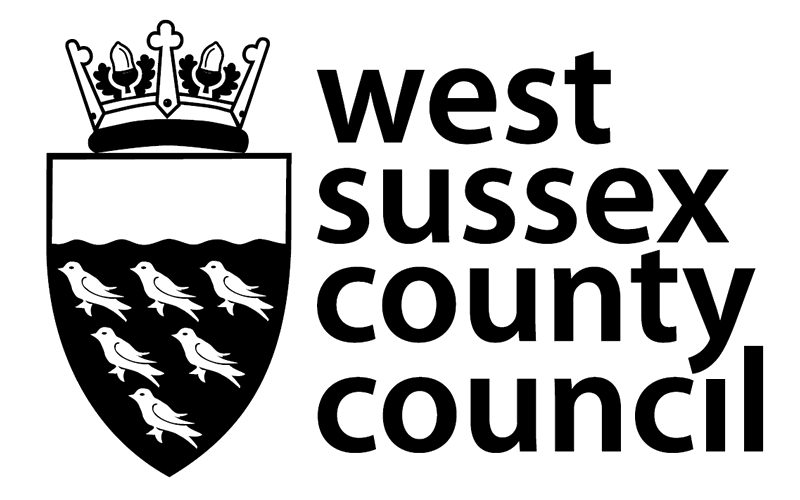There are no longer any open, operational landfill sites in West Sussex. Any waste that requires landfill disposal, as part of our function as Waste Disposal Authority, is sent to Redhill landfill site, in Surrey, which is managed by a private landfill operator. This site has an Environmental Permit which is granted and monitored by the Environment Agency.
The Council is also responsible for monitoring and maintaining six closed landfill sites.
Further information on landfill sites across the county can be found on the Environment Agency website.
Closed landfill sites
We manage and maintain six closed landfill sites, which are monitored regularly for landfill gas and leachate (liquid which may harm the environment). In addition, surface and groundwaters are also sampled to ensure no contamination is present.
Closed sites are restored by turning them into green space such as woodland, parkland or farmland.
Baystone Farm - RH13 0NP
The site is believed to have opened in the early 1960s, stopped accepting waste in 1981 and was fully restored by 1986.
The site contains a leachate collection system, which discharges to the nearby Horsham sewage works. The site has a number of gas and groundwater-monitoring boreholes which are installed outside the waste body.
The site is now used for cropping of hay and is home to local deer, rabbits and foxes.
Faygate - RH12 4SX
This site is mainly surrounded by agricultural land. It is believed to have opened in 1967, initially operated by Crawley Borough Council and subsequently by West Sussex County Council.
The site stopped accepting waste in June 1993 and was fully restored by 1996.
Following completion of the site, a landfill gas management system was installed, consisting of 33 gas wells. These extract landfill gas from the waste body which is then flared off.
This gas system was extended in 2010, which added an additional 20 gas wells around the site perimeter, as well as a new flare. A series of 40 gas-monitoring boreholes are located outside the waste body to monitor any gas migration.
The site is now used for cropping hay, but also harbours a wide variety of wildlife, ranging from a large wild deer population to woodpeckers and skylarks and other flora and fauna.
Pendean - GU29 0EW
This site is believed to have opened in the 1960s and stopped accepting waste between 1974 and 1976.
The site has a landfill gas management system, replaced and upgraded in 2001, and has nine wells.
The landfill gas is extracted from the waste body and then discharged via a gas flare. A series of 4 gas-monitoring boreholes are located outside the waste body, between the site boundary and the neighbouring properties in Pine Close. They consist of boreholes drilled to 3 different depths of 12m, 7m and 3m.
The site is fairly isolated and occasionally used to graze horses. It is home to breeding woodpeckers and a large population of rabbits and pheasants.
Sompting - BN15 0ND
This landfill site partially in-fills a dry valley. It is believed to have opened in the 1940s and closed in the 1990s, being restored by 1993.
The site has a landfill gas management system which consists of 20 wells extracting gas from the waste body which was installed in 2012, replacing the old system. A series of eight gas-monitoring boreholes are located along the eastern edge of the site, along the access road, and 12 around the perimeter of the landfill.
The site was restored for agricultural use, intended to be used for the grazing of cattle or sheep, or cropping for hay. Hares and partridges have also been seen on these slopes.
Steyning - BN44 3YG
The exact date this site first received any waste is unknown, although the railway is known to have been closed and the rails removed in 1966.
It is believed to have stopped accepting waste in the late 1970s, and records indicate it accepted predominately domestic waste. A leachate collection system was installed along the southern side of part of the site in the early 1980s. The leachate is collected and pumped to the adjacent sewage works for treatment.
A series of monitoring boreholes were installed in 2012 to monitor landfill gas, leachate and groundwater within the landfill site.
The site is fairly isolated and is used for grazing horses and cattle.
Westhampnett - P018 0NX
This site in-fills a former gravel working, and was opened in 1970, being operated by Chichester District Council.
It stopped accepting waste in 1983, however was re-opened between 1988 and 1991 to accept further waste, being finally restored in 1995 using material excavated from the A27 Westhampnett by-pass.
In autumn 2003, a groundwater treatment plant was constructed, located on the other side of the A27. This manages any contaminated groundwater produced by the landfill site. The on-site treatment plant aerates the collected liquid, which then passes through a reed bed system. This is then discharged into the flooded gravel pit operated under a discharge consent from the Environment Agency.
A series of 54 gas monitoring boreholes have been installed around the perimeter of the site to monitor any gas migration. A new gas extraction system was installed in 2017, with a series of gas wells disposing of gas via a gas flare, to prevent any gas migrating off site.
The site now hosts a solar farm, installed by the County Council in 2017/18 which generates 7.4 megawatt of electricity, enough clean energy to power 2,400 homes. More information on the scheme can be found on our Westhampnett Solar Farm page.

